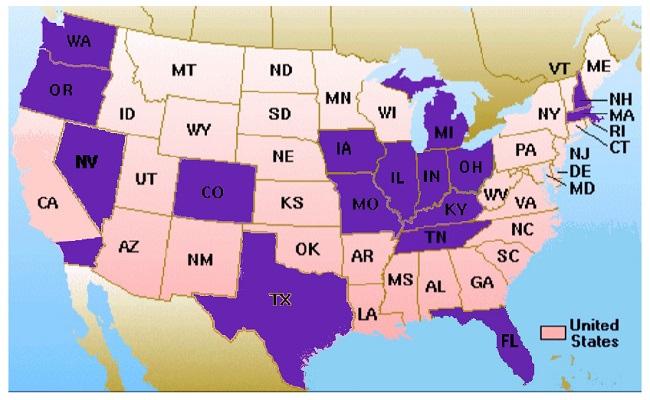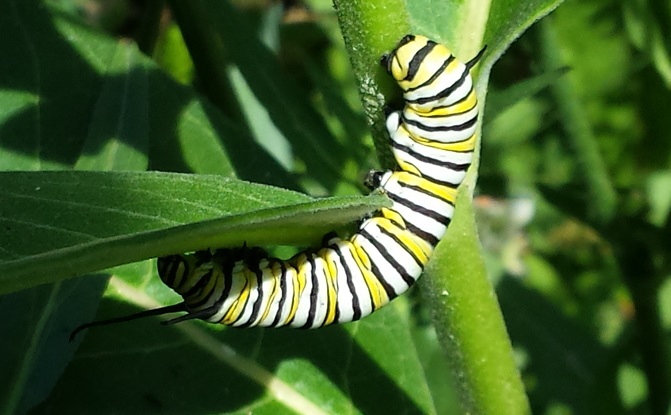April 15, 2018 – Science is for Citizens, Too
How do you pronounce the word “realtor”?
![]() You can probably see where I’m going with this question. To be sure, the answer is “real-ter,” not “real-a-tor.” Actually, some folks would prefer “real-tor.” Picky, picky, picky. One fellow in the business, who used to be an English professor, has some insight into what’s behind the almost-universal mispronunciation.
You can probably see where I’m going with this question. To be sure, the answer is “real-ter,” not “real-a-tor.” Actually, some folks would prefer “real-tor.” Picky, picky, picky. One fellow in the business, who used to be an English professor, has some insight into what’s behind the almost-universal mispronunciation.
I’m not pointing it out to bust your chops. Okay, I am pointing that out to bust your chops. But I’m also calling attention to the first guest on The Mike Nowak Show today. Her name is Cheryl Julcher and her business is Yellow Brick Properties, Inc. They say they have a company
- that is placing Health and Well-Being into the center of its real estate practice.
- that has dedicated, knowledgeable and trained brokers in the construction process and building sciences.
- that understands, explains and educates its clients in what “Green” means in the context of real estate.
If you ask me, that should be something that every realty company does. Unfortunately, they do not. Remarkably, Julcher says that they might be only realty company in the country that focuses on sustainability.

What sets us apart from the traditional crowded real estate storefront scene is that our agents share our company passion for healthy, comfortable, sustainable housing— all holding the National Association of Realtors GREEN designation.
In fact, Yellow Brick Properties won the National Association of Realtors top award in sustainability last year, the Evergreen Award. We take our time getting to know new clients, understanding their situation, setting goals and deciding what features they could really benefit from in a new home or their current one (e.g., comfortable, healthy indoor air quality, lowering exposure to toxins and EMF’s).
Helping folks find sustainable housing led to the next step for Julcher, which was to help people build sustainable housing. Thus, the creation of Zoetic® Building Consultants, LLC, which works to create healthy, safe, comfortable, smart, sustainable and energy-efficient homes.
Cheryl Julcher is a 23-year veteran of the realty business, who has presented as a panel expert for US Department of Energy and at the Passive House Alliance Chicago chapter. She joins us in the WCGO Studios this morning.
More twists and turns in the MWRD Commissioner’s race
It might not have been impossible, but what Cam Davis did in the recent Illinois primary election was highly unlikely. You might remember that we talked to Davis on the show just a couple of weeks before the election. He was running for a commissioner’s seat on the board of the Metropolitan Water Reclamation District of Greater Chicago, following the sudden death of Commssioner Timothy Bradford.
Because Bradford’s death came three days before the filing deadline, there was no opportunity to anybody to acquire the needed signatures to be on the primary ballot. That meant that whoever ran for the office would have to be written in and receive more than 8,000 vote. In a nutshell, that had never been done in Cook County, and it seemed as though no one was going to qualify to be on the November ballot.
That was before a lot of highly visible folks, who like what Davis represents, got into the act and began to spread the word about his candidacy. They included people like U.S. Senator Dick Durbin, U.S. Rep. Jan Schakowsky, U.S. Rep. Mike Quigley, MWRD Commissioner Josina Morita and more. It probably didn’t hurt that Davis was endorsed by the Chicago Sun-Times, too.
They all knew that Cam Davis had been President & CEO of the Alliance for the Great Lakes, where he started the Adopt-a-Beach® program with 10,000 volunteers around the region. And that he served as President Barack Obama’s “Great Lakes Czar” as head of the Great Lakes Restoration Initiative.
 In fact, as I wrote then, I would have been late to the party myself had it not been for MWRD Commissioner Debra Shore, who contacted me about Davis and urged me to do some research about his campaign. She recorded a wickedly edgy campaign video for Davis, which featured her “tattooed” fingers in the image you see on the right. In fact, on Twitter I called her a “badass” for stepping up for a candidate in which she believed so strongly.
In fact, as I wrote then, I would have been late to the party myself had it not been for MWRD Commissioner Debra Shore, who contacted me about Davis and urged me to do some research about his campaign. She recorded a wickedly edgy campaign video for Davis, which featured her “tattooed” fingers in the image you see on the right. In fact, on Twitter I called her a “badass” for stepping up for a candidate in which she believed so strongly.
When the dust settled, a full three weeks after the vote, the results showed that Davis had picked up a total of 54,183 write-in votes, more than six times the number needed to advance. But, as the Sun-Times reports, that isn’t the end of the story.
No Republicans filed for the write-in election, but that doesn’t mean Davis doesn’t have a fight ahead. Gov. Bruce Rauner appointed Republican David Walsh to fill the spot just days after last month’s primary, and his office said they believe Walsh should serve the remainder of Bradford’s term, which runs through 2020. That sets the stage for a likely court battle on who will fill the seat after the November election.
“The core issue here is whether the voters should decide who represents them or whether Gov. Rauner will decide for the voters,” Davis said.
Indeed. Considering that the MWRD plays an important role in monitoring water quality for the 883.5 square miles of Cook County, Illinois and, by extension, the surrounding region, it is an important position. Which is why Cam Davis is back on the program this morning, to look at what he thinks will happen following the election this November. It should be interesting.
Yesterday was the third annual Citizen Science Day.
Sorry if you missed it. However, we’re giving you a “make-good” on today’s show, in the form of Doug Taron, PhD, Chief Curator of the Chicago Academy of Sciences. , which you probably recognize as the Peggy Notebaert Nature Museum. He’s a scientist who appreciates the work of citizen scientists, according to this month’s Natural Awakenings Chicago magazine.
Taron points out that citizen scientists provide a valuable service to both the scientific and general communities. The results from their work are often put into practice in the form of new exhibits and real-world examples used by educational programs. “Some of our curators have been able to publish analyses using the citizen science data,” he notes.
Results from the compiled data show real-time data, such as the rise and fall of butterfly populations, says Taron.
Taron is sometimes known as “the butterfly guy” and, to that end, he’s director of the Illinois Butterfly Monitoring Network. More on that in a second. He’s also President and co-steward of Friends of Bluff Spring Fen; he is on the steering committees of the International Migratory Dragonfly Partnership and the North American Butterfly Monitoring Network; he serves on the Mayor’s Committee for Nature and Wildlife in Chicago; and he is a member of the Lepidopterists’ Society, The Sonoran Arthropod Studies Institute, The American Association of the Advancement of Science and the American Alliance of Museums.
But let’s return to the Illinois Butterfly Monitoring Network–celebrating its 30th year in 2018–which represents citizen science at its finest. As Taron notes in the above quote, the IBMN trains citizen scientists to collect data on butterfly populations, which allows land managers to spot and even manage long-term ecosystem changes.
The success of this kind of program has led to other citizen science projects, like the Illinois Odonate Survey, which surveys dragonfly and damselflies populations throughout Illinois, and the Calling Frog Survey, which monitors amphibian populations in the Chicago region.

And now, as Taron points out, the concept of the IBMN has spread to 17 more states, which you can see in the map on the left. That takes us to the monarch butterfly (Danaus plexippus), as most conversations about butterflies do in 2018. According to the Monarch Joint Venture, the overwintering numbers of monarchs decreased by almost 15% over this past winter. At this point, they are well into their journey into the United States; some will eventually travel to Canada. (Here’s the map of sightings as of April 12.)
One of the keys to the decline of monarchs in recent years has been the loss of milkweed plants, which are necessary for the survival of the species. Monarch caterpillars eat only milkweed plants (Asclepias spp.), and monarch butterflies need milkweed to lay their eggs.
Farm land management practices like the use of “Roundup Ready” crops have taken a severe toll on milkweed plants throughout the United States. That is leading agencies to adopt strategies to compensate for their loss. One of the latest is from the Midwest Association of Fish and Wildlife Agencies (MAFWA), which has a goal of planting 1.3 billion new milkweed stems over the next 20 years.
Believe it or not, efforts to protect the monarch could have negative consequences. The U.S. Fish and Wildlife Service will be deciding by June 30, 2019 whether to put the monarch on the Endangered Species List. That has put groups like the Illinois Farm Bureau in a panic about having crop management regulated in an effort to protect the species.
Listing of the butterfly under the Endangered Species Act would ‘fundamentally change agriculture in the Midwest,’ says IFB official.
That has led to the introduction of HB5293 in the Illinois General Assembly. The Illinois Environmental Council (IEC) says that the bill would
- Amend the Illinois Endangered Species Protection Board by designating two seats to agricultural interests that are not required to be qualified to make decisions on the science of protecting endangered species.
- Alter public notice requirements when a species is added to the Endangered Species list.
- Weaken state regulations that protect endangered species because the bill would remove the requirement to obtain ‘incidental takings’ permit from the state in the event of species and/or habitat destruction. Defers to the Trump Administration to decide when Illinois’ endangered species are ‘incidentally taken’.
I don’t know about you, but whenever I see a proposed environmental law that includes the words “defers to the Trump Administration” about anything, I get the cold shakes.
Unfortunately, the IEC reports that the bill passed the House Agriculture Committee on Monday with a roll call vote of 10-2-1, which means that the bill is headed for a vote. The IEC is urging a no vote, and we agree. Click here to find your representative and to say “no way, no how.”
Meanwhile, we’re pleased to have Doug Taron, who is a very good friend of this show, in studio with us today.

